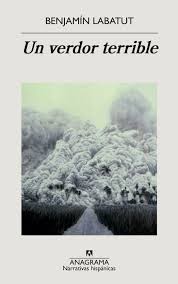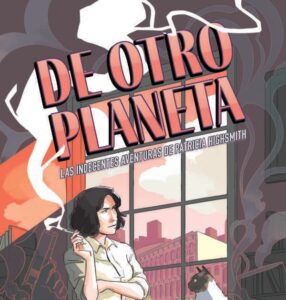
Original language: Español
Year of publication: 2020
Valuation: Highly recommended
It will take months for my opinion to settle and see how the two books evolve in my head, but the initial assessment is conditioned by the (dis)order of my readings. The previous reading of MANIAC makes the surprise factor that many people talk about regarding “A Terrible Greenery” not so much, that A terrible green It no longer seems as novel to me as it would have seemed to me if I had followed the “correct” reading order, that it sounds like something I have already read (and too recently, too) and I cannot, honestly, give it a higher rating than that of MANIAC.
This doesn’t mean I didn’t like it. Quite the opposite! Labatut handles the rhythm like few others and once again makes topics as apparently soporific as quantum mechanics or mathematics fascinating. Of course, in the end, physics or mathematics are still the excuse to talk to us about beings as brilliant as they are tragically human, about characters who move between reason and delirium, about scientists who border on the incomprehensible and try to coexist, about a or another way, with it.
On this occasion, Labatut returns to real events and fictionalizes them, filling in the gaps and delivering texts that are halfway between dissemination and reportage. Beings turned into characters, protagonists of History who are trapped and/or overcome by it (Schwarzchild, Grothendieck, Schrodinger or Heisenberg) in four stories that, although independent, have links and ties that make them A terrible green a very very particular historical novel.
Given the choice, I choose “Prussian Blue”, a text that opens the volume and in which we move through a labyrinth led by the author who takes us from the 18th century to the concentration camps, from chemistry to geopolitics. , passing through painting, in a dazzling, terrifying and lethal ensemble.
Also worth highlighting is the central character of “The Heart of the Heart”, the mathematician Alexander Grothendieck. An enlightened and paranoid genius, he condenses the entire tragic 20th century into his 86 years of life.
Finally, mention “When we stop understanding the world”, a metaphysical text (yes, metaphysical despite the fact that it seems that we are talking about atoms and so on) in which two visions of science and the world confront each other, that of Schrodinger and that of Heisenberg, facing the unknown.
In summary, A terrible green It has been, for me, confirmation of Labatut’s talent. Of course, next time I would like him to take other paths, to take on new challenges and new risks. I think it has plenty of literary quality.
Source: https://unlibroaldia.blogspot.com/2024/06/benjamin-labatut-un-verdor-terrible.html


